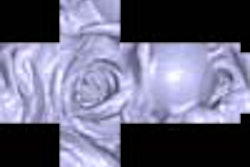GE Medical Systems, Waukesha, WI, 2003, $250
PET and PET/CT have become important tools for the management of many common malignancies. This CD is a tremendous resource for all physicians who interpret these studies, as well as for residents preparing for board exams.
Topics covered in the CD include technical performance, normal variants and artifacts, keys to successful imaging, standard uptake value (SUV), and image interpretation. The authors are leaders in the field, and discuss the topics in a thorough and straightforward way. Each presenter has his own style with excellent speaking skills. They all present numerous cases.
One of the strengths of this program is the large number of cases, offering a full spectrum of normal imaging results. The choice of topics, and the depth of coverage, is useful for radiologists with varying levels of expertise. Each Medicare-approved oncologic indication for PET imaging is discussed with appropriate background, references, and examples. In addition, patient care is emphasized. A lecture that I found particularly interesting was on the supraclavicular fat artifact and positive variance of SUV values with obesity.
The running time of the entire CD is approximately seven hours, with the lectures averaging 30 minutes each. The viewing screen features a video of the lecturer presenting his material, a scrolling window of the text of the lecture, and an automatic slide window for figures and images.
Overall, the format was straightforward to use and conducive to learning. The entire viewing screen took up approximately half of the screen area of my monitor. Decreasing the resolution of my monitor helped increase the size of the viewing screen, but image quality suffered. An improvement to this format would be the option to resize the viewing screen and fill the entire monitor. Other minor faults were that the spoken and written text did not always match, while some images were too small.
Unfortunately, the rapid pace of development in this field prevents this series from being up-to-date. Since the CD was released, PET has been approved for thyroid cancer imaging.
Without proper performance and interpretation, PET and PET/CT cannot effectively be used for patient care and prognosis. To that end, this program is a critical resource for all physicians.
By Dr. Danny DonovanAuntMinnie.com contributing writer
October 14, 2003
Dr. Donovan is a third year resident at Methodist University Hospital in Memphis, TN. He is interested in pursuing a fellowship in cardiac and noninvasive vascular imaging.
The opinions expressed in this review are those of the author, and do not necessarily reflect the views of AuntMinnie.com.
Copyright © 2003 AuntMinnie.com




















